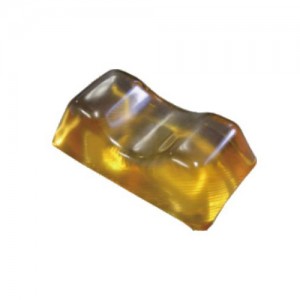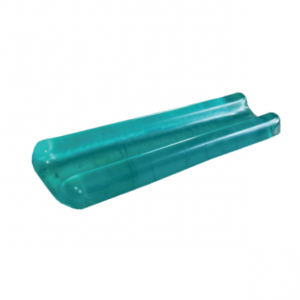
Universal positioner ORP-UP
Universal Positioner
ORP-UP
Function
1. Universal positioner is suitable for safe and effective positioning during all surgical procedures. It is suitable for various kinds of posture.
2. It is suitable for supine, prone, lithotomy, lateral positions.
| Model | Dimension | Weight |
| ORP-UP-01 | 27 x 13 x 4.6cm | 1.08kg |
| ORP-UP-02 | 38 x 13 x 5.3cm | 1.72kg |
| ORP-UP-03 | 47 x 13 x 4.5cm | 2.42kg |




Product parameters
Product Name: Positioner
Material: PU Gel
Definition: It is a medical device which is used in an operating room to protect patient from pressure sores during surgery.
Model: Different positioners are used for different surgical positions
Color: Yellow, blue, green. Other colors and sizes can be customized
Product characteristics: Gel is a kind of high molecular material, with good softness, support, shock absorption and compression resistance, good compatibility with human tissues, X-ray transmission, insulation, non-conductive, easy to clean, convenient to disinfect, and does not support bacterial growth.
Function: Avoid pressure ulcer caused by long operation time
Product characteristics
1. The insulation is non-conductive, easy to clean and disinfect. It does not support bacterial growth and has good temperature resistance. The resistance temperature ranges from -10 ℃ to +50 ℃
2. It provides patients with good, comfortable and stable body position fixation. It maximizes the exposure of the surgical field, reduce the operation time, maximize the dispersion of pressure, and reduce the occurrence of pressure ulcer and nerve damage.
Cautions
1. Do not wash the product. If the surface is dirty, wipe the surface with a wet towel. It can also be cleaned with neutral cleaning spray for better effect.
2. After using the product, please clean the surface of the positioners on time to remove dirt, sweat, urine, etc. The fabric can be stored in a dry place after drying in a cool place. After storage, do not put heavy objects on top of the product.
Gel positioner helps prevent shearing, support the patient and prevent bottoming out.
Due to the importance of positioning patients for surgery, it can be difficult to turn or move patients during an operation. Positioning is often key to allowing the surgeon and anaesthetist to carry out the procedure as safely as possible. However, care must be still taken when placing patients into position, to avoid straining joints and, where possible, positions that impact on blood flow.
Transferring of the patient using glide sheets and slide boards is essential to minimize the risk of friction-related skin damage. High-risk areas should be identified before the patient is positioned, to allow pressure-reducing devices to be put in place. A pressure-redistributing theatre mattress should be used to protect the back and sacrum (depending on position). As pressure ulcers most often occur over bony prominences, these sites should be checked once the patient is in position, and appropriate pressure redistribution products put in place. There are a number of pressure redistributing products available, some made from high density, single patient use foam, gel, and static and dynamic air. Static air overlays allow air to circulate through a number of chambers, whereas dynamic air mattresses have a pump, which creates cycles of inflation and deflation. The problems of using dynamic air mattresses intraoperatively relate to patient movement, which can be problematic for the surgeon.
Gel products help prevent shearing, support the patient and prevent ‘bottoming out’. These devices can be used to protect the patient’s bony prominences and are available to help position the patient’s body and as operating table overlays. These pressure-redistributing products work by spreading the ‘load’ or weight of the patient over a larger surface area. Therefore, instead of pressure being concentrated on one small area, the force is dissipated across the positioner and away from the patient, thereby reducing the interface pressure.








